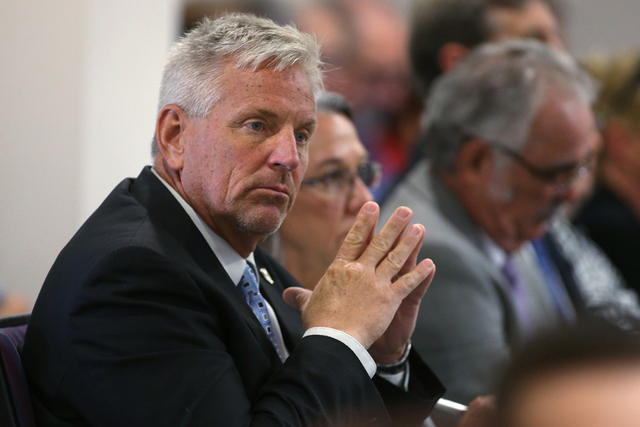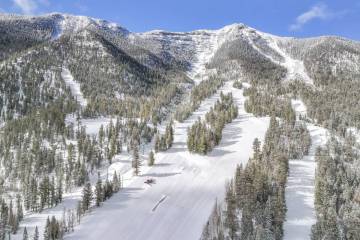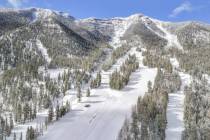Water looming as key issue for Nevada Legislature
CARSON CITY — State lawmakers got a crash course Tuesday on Nevada’s complicated water laws as they prepare to consider several bills dealing with the most precious resource in the driest state in the nation.
State Engineer Jason King, whose office has proposed four bills this session, said more proposed laws are expected, including one to address Nevada’s long-standing doctrine of “use-it-or-lose it.”
He also tried to dispel concerns by domestic well owners that his office wants to take away domestic well rights.
“That couldn’t be further from the truth,” King told a joint meeting of the Senate and Assembly natural resources committees.
But the state’s more than a century-old water law is based on the principle of “first in time, first in right,” meaning the holders of the state’s oldest water rights are first to get their allotments if curtailments become necessary in times of drought or overly stressed groundwater basins .
Roughly 20 percent of the 256 groundwater basins in Nevada considered “severely over appropriated,” meaning there’s more water appropriated on paper than is available.
Domestic well owners are allowed 2 acre-feet annually. But most appropriated wells are “junior” in priority, meaning under existing law they could be subject to being cut off if a severe water problem occurs.
If a situation develops where groundwater levels plummet, “the statute provides that our office shall go in and regulate by priority,” King said. That would entail setting a cutoff date on when water rights or wells were drilled to determine who gets water and who doesn’t.
Nevada’s wet winter may alleviate immediate water and drought concerns, but officials said the state cannot be complacent in planning for a return of dry years.
Nevada is the driest state in the nation, and its total water resources involve about 2 million acre-feet of groundwater and 4.7 million acre-feet of surface water. That is about the same volume that flows through Dalles on the Columbia River in 19 days, King said.
An acre-foot is about 326,000 gallons, or enough water to supply two families of four for a year.
In Southern Nevada, John Entsminger, general manager of the Southern Nevada Water Authority, stressed conservation has kept the Las Vegas area out of critical water shortages.
With a population of 2 million, the Las Vegas area uses under 5 percent of the Nevada’s available water, while 67 percent is used for irrigation.
“Conservation is front and center in all our resource planning,” Entsminger said.
Las Vegas gets 90 percent of its drinking water from Lake Mead, which is fed by the Colorado River and snowmelt from the Rocky Mountains. The river system has been under drought conditions for more than a decade.
Entsminger said while the northern Rockies are not getting hit quite as hard as the Sierra this winter, snowpack in some areas of the region has measured about 160 percent of normal.
But he said one good winter alone won’t be a drought buster for the arid regions of the Southwest.
“We would need multiple years like this to break the drought cycle on the Colorado River,” Entsminger said.
Contact Sandra Chereb at schereb@reviewjournal.com or 775-461-3821. Follow @SandraChereb on Twitter.






















